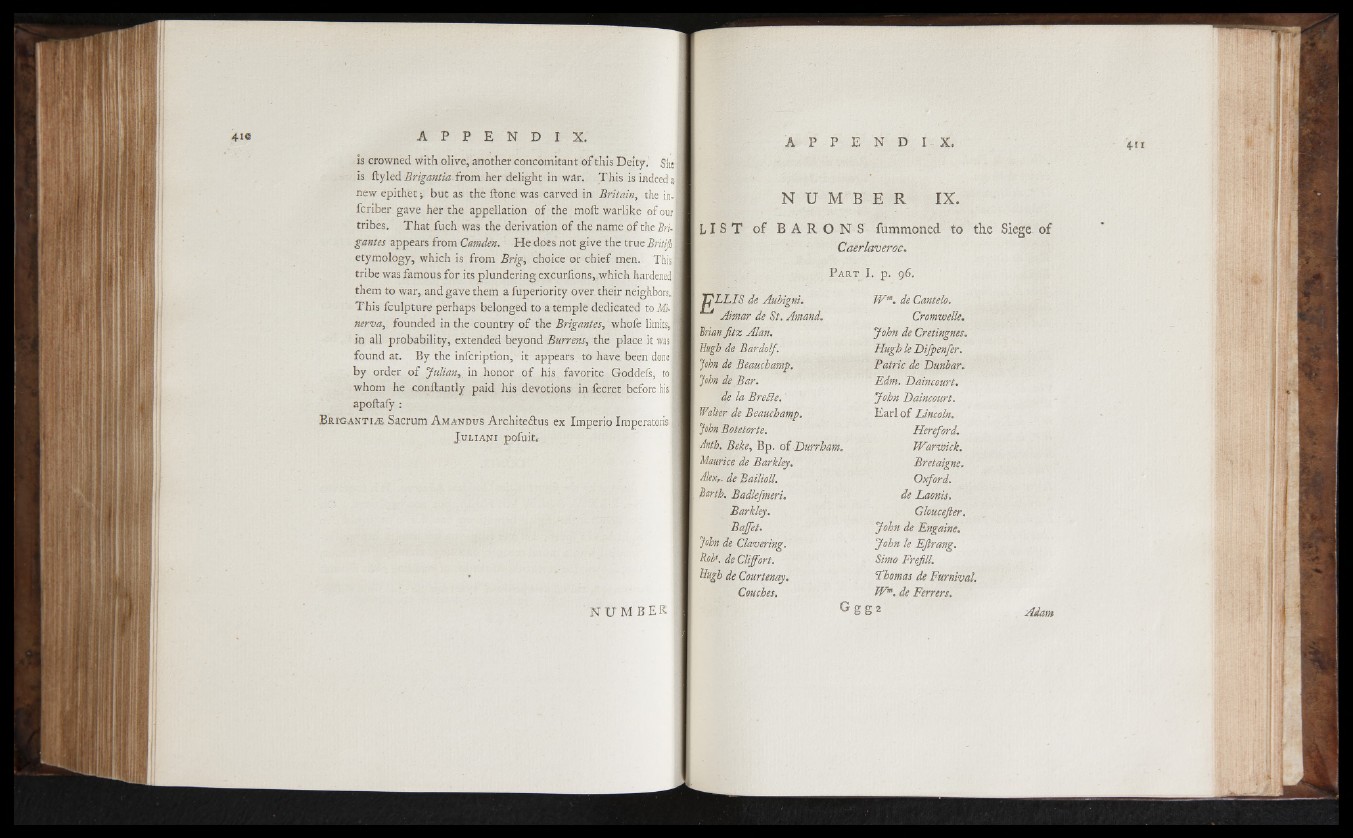
is crowned with olive, another concomitant of this Deity.' She
is ftyled Brigantia from her delight in war. This is indeed a
new epithet; but as the ftone was carved in Britain, the in-
fcriber gave her the appellation of the moil; warlike of our
tribes. That fuch was the derivation of the name of the Bri-1
gantes appears from Camden. He does not give the true Britifil
etymology, which is from Brig, choice or chief men. This!
tribe was famous for its plundering excurilons,,which hardened!
them to war, and gave them a fuperiority over their neighbors.1
This fculpture perhaps belonged to a temple dedicated to Mi-nerva, founded in the country of the Brigantes, whofe limits,!
in all probability, extended beyond Barrens, the place it was I
found at. By the infcription, it appears to have been done!
by order of Julian, in honor of his favorite Goddefs, to!
whom he conftantly paid his devotions in fecret before his;|
apoftaly:
B r . ig a n t i^ e Sacrum A m a n d u s Archite&us ex Imperio ImperatorisJ
JULIANI pofuit.
N U M B E R
N U M B E R I X .
LI ST of B A R O N S fummoned to the Siege of
Caerlaveroc.
P a r t I. p. 96.
VLLIS de Aubigni.
Aimar de St. Amand.
Man fitz Alan.
Hugh de Bardolf.
John de Beauchamp.
John de Bar.
de la Breiie.
Walter de Beauchamp.
John Botetorte.
Anth. Beke, Bp. of Durrham.
Maurice de Barkley.
AleXr ■ de Bailioll.
Bajfet.
John de Clavering.
Rob1, de Cliffort.
Hugh de Courtenay.
Couches.
Wm. deCantelo.
Cromwelle.
John de Cretingnes.
Hugh le Hifpenfer.
Patric de Dunbar.
Edm. Daincourt.
John Daincourt.
Earl of Lincoln.
Hereford.
Warwick.
Oxford,
de Laonis.
Gloucefler.
John de Engaine.
John le Eflrang.
Simo Frefill.
Thomas de Furnival.
Wm. de Ferrers.
G g g 2 Adam